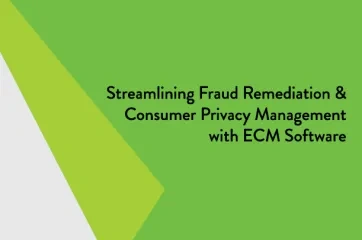Omni-channel banking involves providing customers and members with consistent, reliable experiences across self-service and full-service channels. Financial institutions that successfully deliver omni-channel experiences make it easy for account holders to switch between channels without losing track of their banking journeys.
The Development of Omni-Channel Banking
Consumers’ banking needs and technological habits have changed considerably since the turn of the millennium. Faster Internet speeds, widespread availability of wireless networks, and smartphone proliferation have altered how Americans perform most tasks—including banking.
In retrospect, the implementation of Check 21 marked a key milestone in facilitating the change necessary to support today’s omni-channel banking experiences. Check 21 enabled electronic check exchange between financial institutions, opening the door to multiple deposit channels: batch capture, remote capture, teller capture, mobile capture, and ATM/ITM capture.
Roadblocks to Omni-Channel Banking
Ensuring consistent, reliable experiences across branches, online, mobile, and other channels isn’t easy, especially for community financial institutions with limited resources. Here are a few challenges that may inhibit omni-channel banking:
Tech sprawl: Financial institutions have adopted a variety of technologies to keep pace with customer and members’ evolving needs. Doing so helps deliver high-tech, high-touch capabilities but results in multiple applications and infrastructure to budget for, integrate, support, and keep secure.
Exposure to risk: Customers and members enjoy facilitating their own transactions through mobile applications and other channels. Unfortunately, many bad actors see the prevalence of multiple payment channels as an opportunity for perpetuating fraudulent schemes.
Continual change: Rapid technological change has led to a myriad of downstream professional, industrial, and societal changes. Many Americans now work from home, switch companies more frequently than prior generations, or have “side hustles,” such as selling items online or driving for ridesharing companies. Online commerce has transformed how people buy clothing, groceries, automobiles, vacations, and other goods and services. Some people rarely—or never—visit their financial institution’s local branch, preferring to do all of their banking online. Such complexity can make it harder for financial institutions to truly understand their account holders.
Connecting the Dots to Support Omni-Channel Experiences
To build lasting banking relationships in the modern era, financial institutions should implement solutions that make it easier to deliver omni-channel experiences. Unify from Alogent, for example, helps banks and credit unions accomplish this goal through a single API. With Unify, images are treated the same regardless of their point of capture, resulting in enhanced consistency and efficiency.
Browse additional banking definitions or visit Alogent’s Innovation Hub for eBooks, videos, and other resources.














